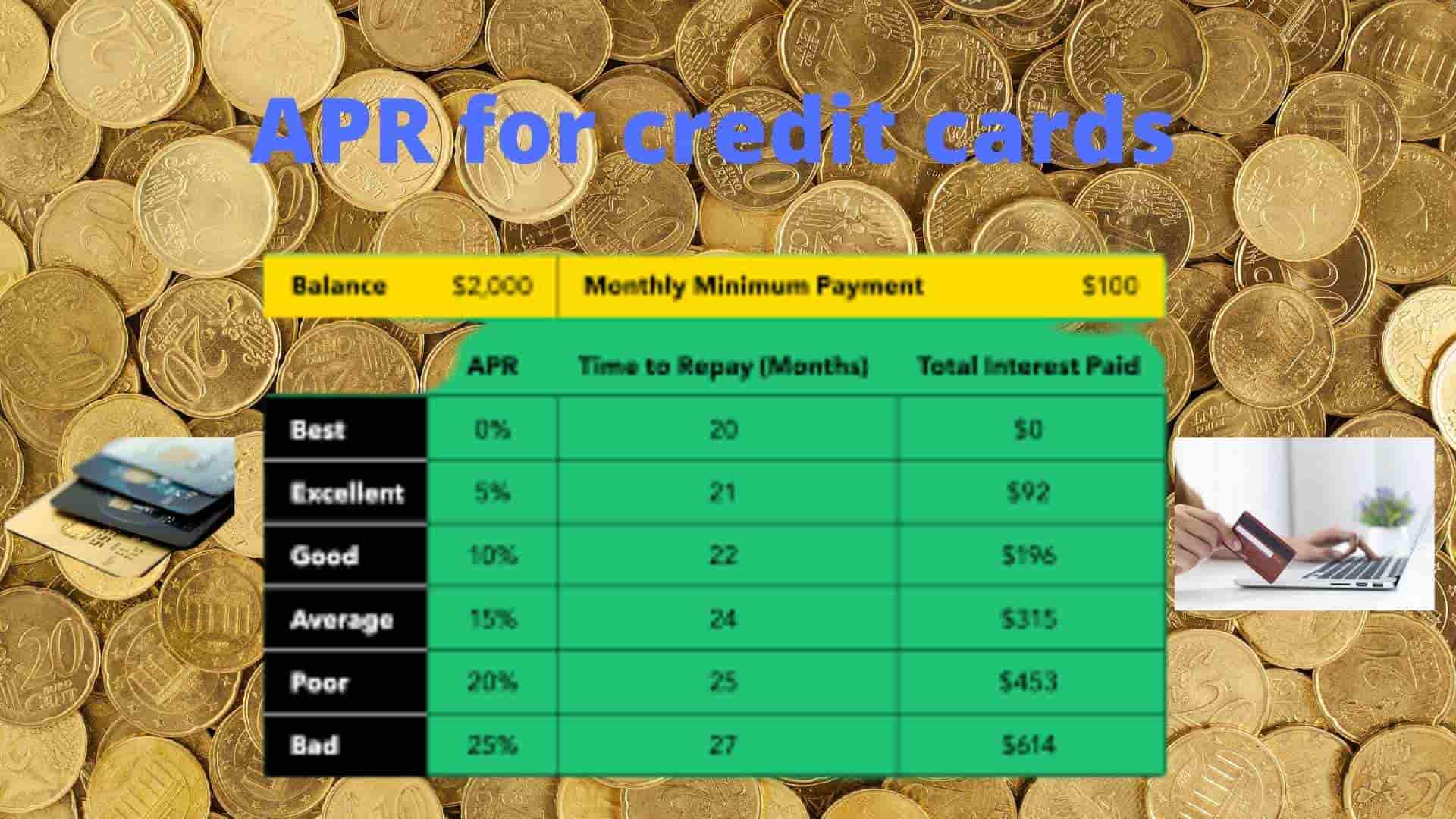APR for credit cards – Credit card interest rates can range from 0% to 29.99%, depending on your chosen credit card. By understanding how APR is calculated, you can better decide which cards to use and which are best for your lifestyle.
Table of Contents
What is APR?
APR stands for annual percentage rate. It is the interest rate your credit card charges if you carry a balance on that card. The APR will be different from the purchase or cash advance rates, depending on whether or not you pay your balance in full each month.
If you don’t pay off your bill every month, what happens? Well, that’s where your APR comes into play: how much more money you’ll owe over time due to interest charges. So that’s why it’s essential to know how much APR is!
What is the average APR for credit cards?
The average APR for credit cards is calculated on an annual basis. The interest rate you’ll pay when using your credit card is usually determined by the bank that issued your card.
The lower the APR, the better: You’ll pay less in interest over time and be able to make larger purchases without breaking your budget. The best part is that if you have a high-quality credit score and apply for a card, you could qualify for an introductory 0% APR promotion as low as 0% or even no balance transfer fee!
As per SoFi professionals, “An interest charge on purchases is the interest you are paying on the purchases you make with the credit card but don’t pay in full by the end of the billing cycle in which those purchases were made.”
How can you find the lowest APR?
To find the lowest APR, check the fine print. The annual percentage rate (APR) is the most important number for credit cards. It determines how much interest you’ll pay over time and can significantly affect your monthly payments. You’ll also want to look at any introductory rates, balance transfer rates that may be available for your card, cash advance fees, or penalty rates if you carry a balance after paying off your purchase.
Should you get a credit card with a 0% intro APR?
You should only get a credit card with a 0% intro APR if you can pay off the balance within the intro period. Otherwise, you’re better off getting a card with lower interest and higher rewards.
There are other things to consider as well:
- What is your credit score? Your credit score will determine which cards you qualify for and how much they cost. If your score isn’t high enough, don’t expect any cards to offer 0% introductory APRs—and if they do, expect them to come with high annual fees or other strings attached.
- How long until your next major purchase? If it’s within the next year or two, then it makes sense to get a 0% intro APR card so that you can earn rewards while paying no interest on purchases during that time frame. But if not, then getting an ongoing rewards card might be best (as long as its regular APR won’t be too high).
It’s essential to keep in mind that APR isn’t the only factor when choosing a credit card. You also need to consider rewards and other features that may make one card more beneficial. For example, getting an introductory offer with zero interest on purchases can be tempting. But if it isn’t the right choice for your long term, it won’t do much good either way!
Visit for more best articles






